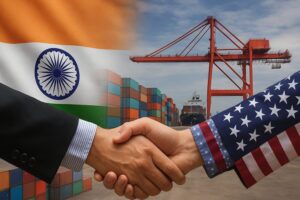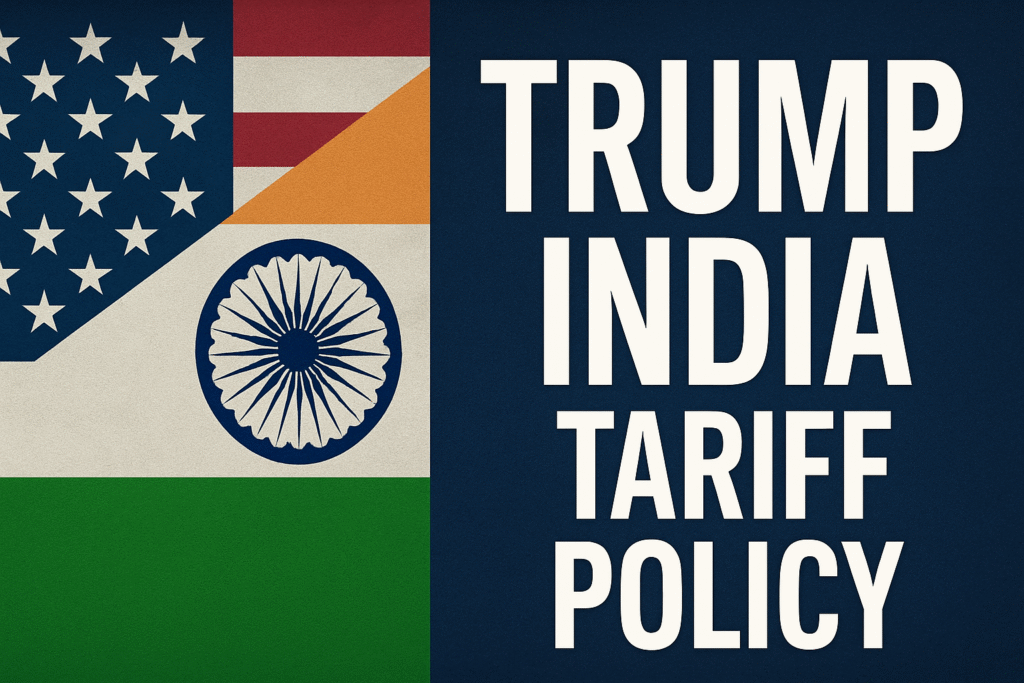Trump India Tariff Policy: What It Means for Trade, Economy, and You
When Donald Trump talks trade, the world listens — and India is no exception. Whether you’re a business owner, an exporter, or just someone curious about global economics, the Trump India Tariff Policy could directly impact your wallet. Let’s break it down in simple, no-nonsense language, just like we’re having a coffee chat.
Why Are Tariffs Back in the Spotlight?
Tariffs aren’t new, but when Trump was in office — and now with discussions heating up again — they became a powerful bargaining chip. His approach has always been straightforward: America First. This means pushing for better trade deals for the U.S., even if it means putting tariffs on goods from countries like India.
What Exactly Are Tariffs?
- Extra charges (taxes) on imported goods
- Designed to protect domestic industries
- Often used as a negotiation tool in trade talks
The Core of Trump’s Tariff Policy Towards India
During his presidency, Trump removed India from the Generalized System of Preferences (GSP), a program that allowed duty-free exports of certain Indian goods to the U.S. The reason? He claimed India wasn’t providing “equitable and reasonable access” to its markets.

Main Highlights:
- Increased tariffs on Indian goods like textiles, gems, and agricultural products
- Focus on reducing the U.S. trade deficit with India
- Pressure on India to open up its markets to American dairy, medical devices, and tech products
How This Affects Indian Businesses
Here’s where it gets real — if you’re an exporter, your goods might become costlier for U.S. buyers, which could mean fewer sales. Small businesses, especially in the textile and jewelry sectors, felt the pinch first.
Possible Impacts:
- Loss of competitive pricing in the U.S. market
- Shift towards alternative markets like Europe or the Middle East
- Pressure to improve quality and reduce production costs
India’s Response to Trump’s Tariffs
India didn’t just sit quietly. It imposed retaliatory tariffs on 28 U.S. products, including almonds, apples, and walnuts — directly targeting American exporters. The move was both political and strategic, signaling that India can play hardball too.

Strategic Moves by India:
- Strengthening trade ties with other partners
- Negotiating better terms in trade talks
- Investing in domestic manufacturing under “Make in India”
What This Means for the Future
With Trump hinting at a tougher trade stance if he returns to office, Indian exporters need to prepare. Diversifying markets, upgrading product standards, and leveraging trade agreements with other countries could be key survival strategies.
Expert Tips for Businesses:
- Keep an eye on U.S. trade announcements
- Explore e-commerce exports to bypass some middlemen costs
- Strengthen brand value to justify higher prices
Final Thoughts: Navigating the Tariff Tide
Tariffs are not just numbers on paper — they shape global business decisions, impact jobs, and influence everyday prices. The Trump India Tariff Policy is a reminder that international trade is as much about politics as it is about economics.
Pro Tip: If you’re in business, start preparing now. The more adaptable you are, the better you can ride out any tariff storms ahead.
Join the Conversation
What’s your take on the Trump India Tariff Policy? Is it a wake-up call for Indian exporters or just another trade hiccup? Drop your thoughts in the comments, share this post with your network, and check out our in-depth guide on India-U.S. trade relations for more insights.

